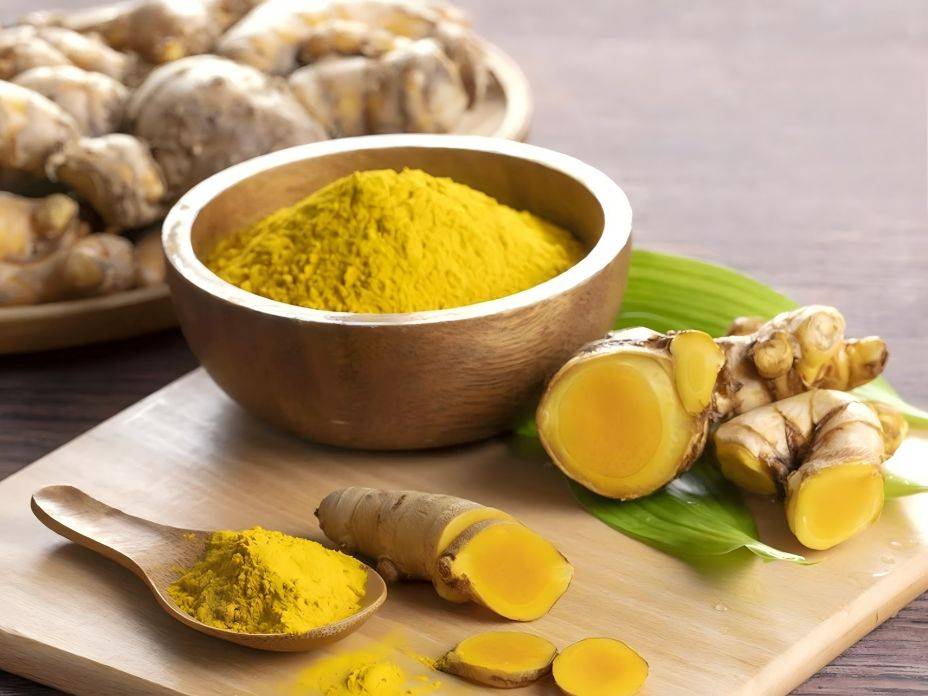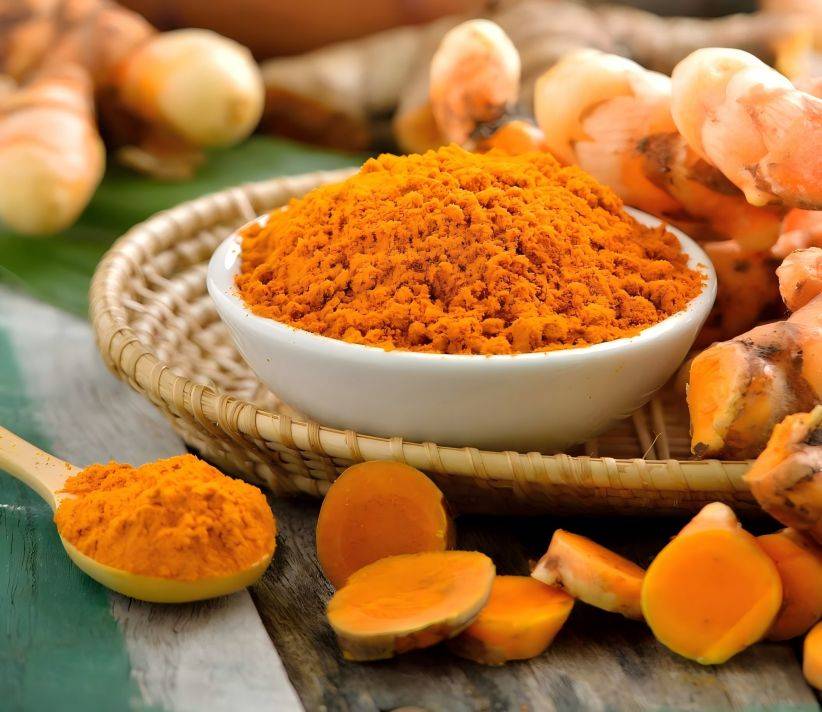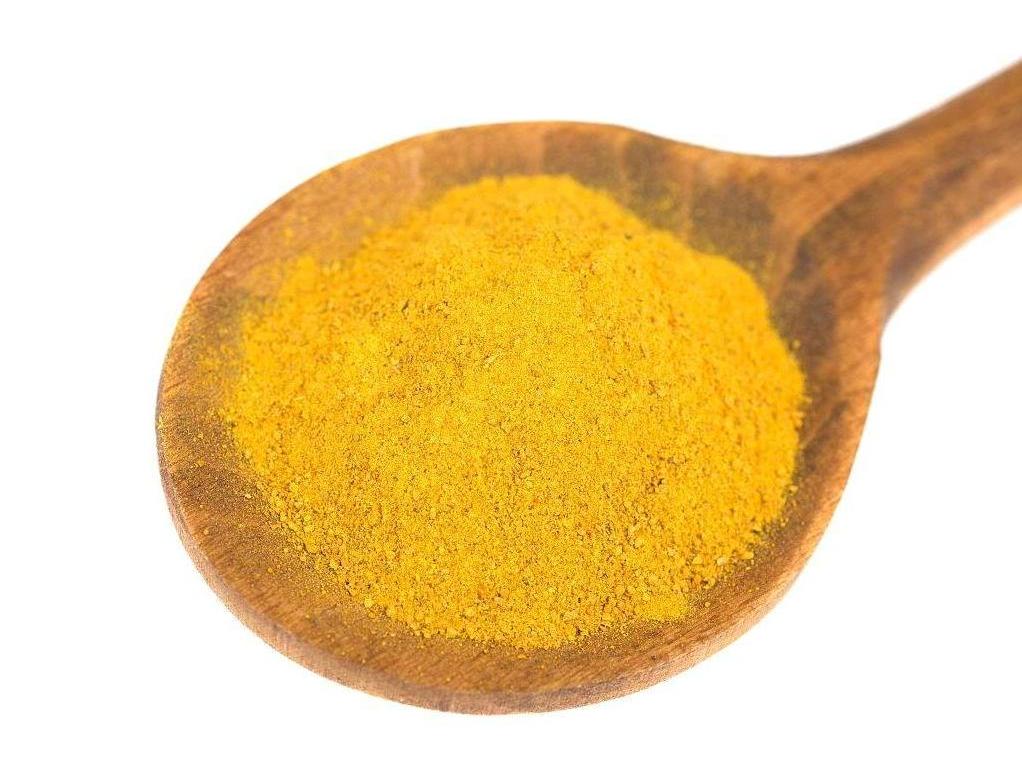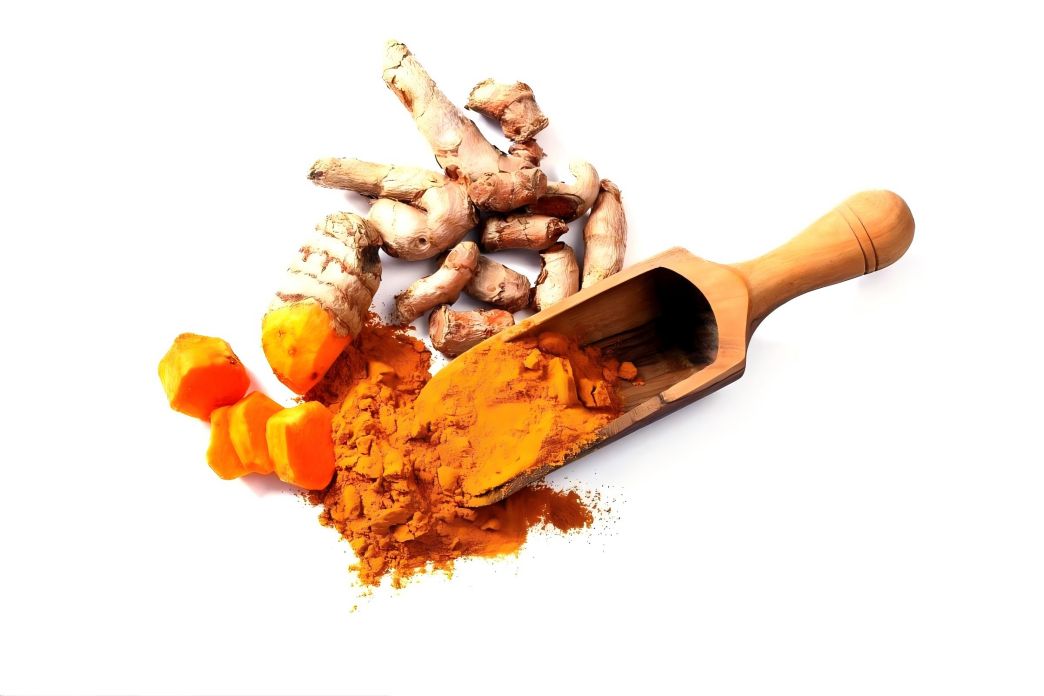What Is the Extraction Method of Turmeric?
Curcumin sold on the market is usually a mixture of curcumin (CUR, content about 77%), demethoxycurcumin (DMC, content about 18%), and bisdemethoxycurcumin (BDMC, content about 5%).
Curcumin (C12H20O6) has two benzenepropanoic acid moieties as a backbone, with an o-hydroxy-methoxy group attached to the benzene ring and a β-diketone (enol form) attached to the propylene group. It is an extremely rare diketone polyphenol (Figure 1). Curcumin is the main ingredient in the rhizomes of the ginger and araceae families. It has a melting point of 180–183 °C, a maximum absorption peak near a wavelength of 425 nm, is slightly soluble in water, but soluble in methanol, ethanol, acetone, ethyl acetate and alkaline solutions. It has strong coloring power. Because curcumin contains double bonds, -OH, -OCH3 and other structurally active groups, it is very unstable in the presence of strong acids, alkalis, light or high temperatures, and is easily oxidized and discolored. It is also prone to forming chelates with metal ions [1–3].
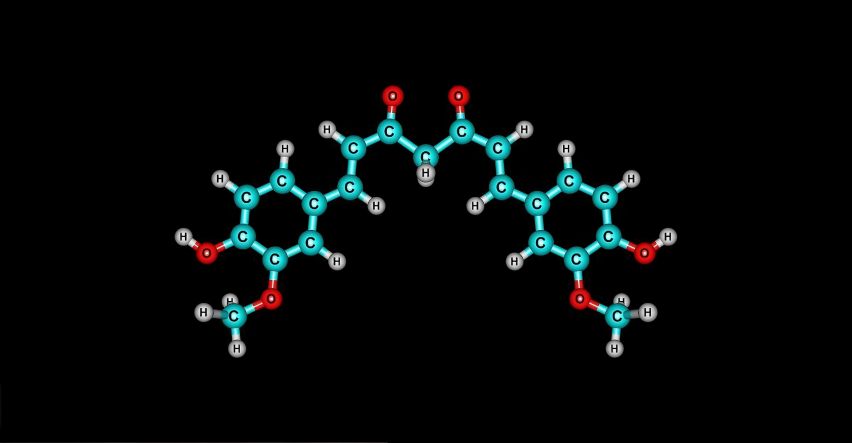
Curcumin has pharmacological activities such as antioxidant [4], anticoagulant [5], hypolipidemic [6], anti-atherosclerosis [7], anti-hepatic fibrosis [8-9], anti-tumor [10-12], anti-inflammatory [5,13], anti-viral [14-15], etc., and it is widely used in the food processing and medical industries due to its low toxicity. Efficient extraction methods are necessary for the production and research and development of curcumin. Traditional methods are mostly simple and crude extraction methods, and the extraction process has problems such as high solvent consumption, long processing times, low extraction efficiency, and environmental pollution [12], which are not suitable for current research and development and market demand. Currently common extraction methods include organic solvent extraction, acid-base extraction, microwave-assisted extraction, ultrasound-assisted extraction, dual-phase extraction, enzyme-assisted extraction, flash extraction, supercritical CO2 fluid extraction, etc. This article aims to provide a reference for the development and utilization of curcumin by introducing the above extraction methods.
1 Chemical extraction techniques
1.1 Organic solvent extraction
Organic solvent extraction is based on the solubility of the desired extract. Organic solvents such as methanol, ethanol, acetone, and ethyl acetate are selected to penetrate into the interior of tissue cells and extract the chemical substances (solid-liquid extraction). The organic solvent extraction method is the most commonly used means of curcumin extraction. It is simple and convenient to operate, and is often used as the primary step in extraction in combination with other auxiliary means. For example, Liu Li et al. [17] extracted curcumin by heating and refluxing with nine commonly used extraction solvents. The extraction rates of each solvent, from largest to smallest, were: methanol (0.56%), ethyl acetate: ethanol (0.55%), absolute ethanol (0.53%), ethyl acetate (0.50%), 70% ethanol (0.45%), acetone (0.44%), 80% ethanol (0.43%), 50% ethanol (0.31%), water (0.15%). Cai Jingjing et al. [18] used response surface optimization to extract curcumin from ginger using an organic solvent combined with a homogenization method. According to the optimized extraction process, the curcumin content extracted with 90% ethanol was 2.27 mg·g-1, which was basically consistent with the predicted value of 2.34 mg·g-1.
Zeng Zhiding [19] determined that the optimal extraction conditions for the acetone extraction method were a 40-mesh turmeric powder, an extraction temperature of 30 °C, a material-to-liquid ratio of 1:10, a stirring speed of 400 r·min-1, and an extraction rate of 2.69%. Zhang Min et al. [20] extracted curcumin using ethanol, methanol, acetone, ethyl acetate and lye as solvents at 50% volume fraction, respectively. It was found that lye was unstable for extracting curcumin; ethyl acetate had the best extraction effect but was more expensive; ethanol not only had a good extraction effect but was also economical and safe, making it an ideal solvent for extracting curcumin. Generally, the hydrophilic ethanol solvent used for curcumin extraction is safer to handle than the toxic methanol and acetone. It is also reusable, inexpensive, and the extracted solution is not prone to mould and deterioration, making it a good green solvent.
1.2 Acid-base extraction
Acid-base extraction refers to the addition of an appropriate amount of acid or alkali to a solution to promote the dissolution or precipitation of the desired component, based on the property of the water solubility of the component being extracted being related to the pH. Since the phenolic hydroxyl group of curcumin is easily soluble in an alkali solution, the pH of the ethanol solvent can be adjusted using NaOH and HCl solutions to improve the extraction rate of curcumin. Song Changsheng et al. [21] used an orthogonal test to optimize the process conditions for the curcumin base solution extraction method. Under the optimal conditions of 10 g of feed, an extraction temperature of 20 °C, an extraction time of 28 h, and a NaOH solution mass fraction of 1.0%, the curcumin extraction rate was 3.13%, and the total curcumin purity was 95.44%. The crude curcumin obtained by this method is easy to dry, but the pH of the solution is difficult to regulate at one time. Once the pH value is too high, curcumin is easily decomposed, and the properties of the product obtained are unstable.
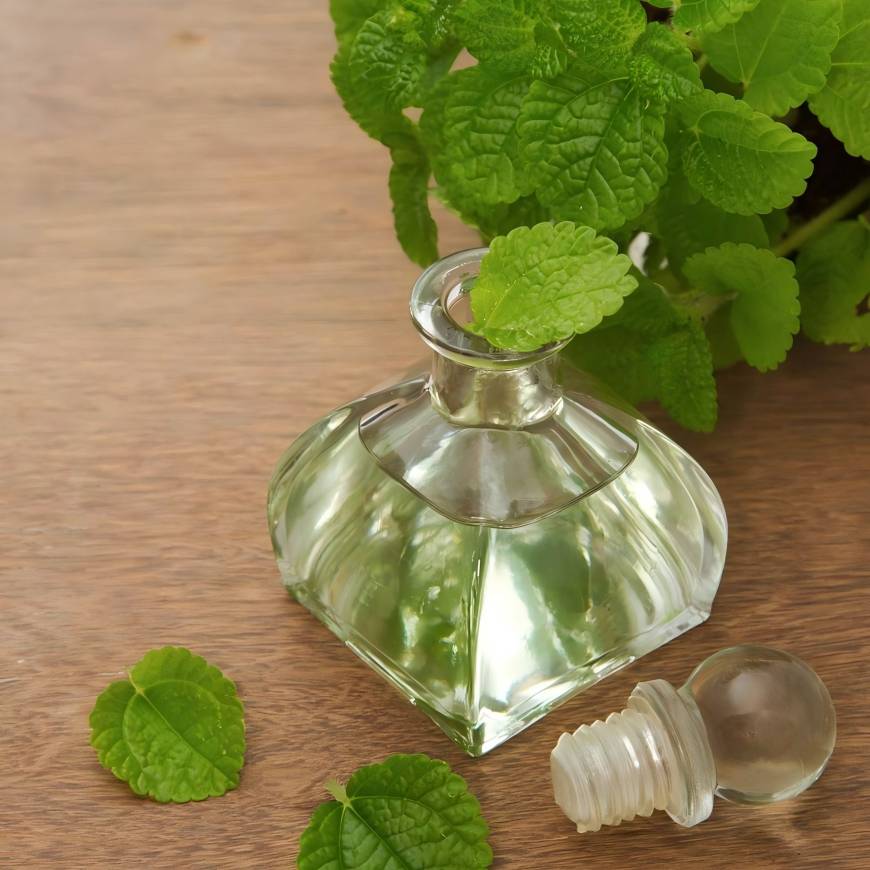
1.3 Double-phase extraction
Double-phase extraction uses the difference in the distribution coefficients of substances between two immiscible liquid phases to extract. Double-phase extraction technology is a new, environmentally friendly extraction and purification technology. This method is mostly used for the extraction and purification of proteins and nucleic acids [22–24]. At present, there are not many reports on the use of this method for curcumin extraction, but it can be used to extract pigments due to its mild conditions. This method requires the selection of an aqueous two-phase system (ATPS) according to the nature of the extract. There are four types of ATPS: polymer/polymer, polymer/inorganic salt (potassium sulfate, sodium sulfate, etc.), low-molecular organic/inorganic salt, and surfactant. Due to the source and cost of solvents, the low-molecular organic/inorganic salt ATPS is generally used for plant extraction.
Su Wenbin et al. [25] used an amphiphilic ionic liquid, 1-butyl-3-pyridinium bromide ([BPy]Br), and dipotassium hydrogen phosphate to form an ATPS, which was combined with microwave-assisted extraction to extract curcuminoids from turmeric. The curcuminoid extraction rate was 4.99%, which was more than 100 times higher than the extraction rate (0.042%) using the traditional hot reflux method. Wang Jiajing et al. [26] took 20 g of defatted turmeric and mixed it with an ethanol extract and a 60% ammonium sulfate solution in a 1:1 ratio to obtain a two-phase mixture. 50 mL of the ultrasonic extract was mixed with an ammonium sulfate solution in a 1:1 ratio, and the alcohol phase was concentrated and dried to obtain a crude curcumin product. The liquid phase was tested and found to contain 11% curcumin. Ghasemzadeh et al. [27] used an ATPS composed of carbohydrates (sorbitol, fructose) and tetrabutylphosphonium bromide (IL) to extract curcumin. The extraction solution of the two-phase solvent extraction is relatively stable, but the two-phase solvent system is prone to emulsification, and the extraction efficiency is low. It is necessary to use auxiliary methods such as microwaves and ultrasound, and it is not suitable for the initial crude extraction of samples.
1.4 Enzyme-assisted extraction
Enzyme-assisted extraction refers to the addition of an appropriate amount of enzyme to a solvent to break down plant tissue, which promotes the rapid dissolution of the active ingredients in the tissue and improves extraction efficiency. Commonly used enzymes include cellulase and pectinase, which break down the plant cell wall. Yin Lichong [28] used an enzyme-assisted ultrasonic method to extract curcumin. After 42 minutes of enzymatic hydrolysis with an enzyme amount of 21 mg·g-1, the curcumin yield was 4.890%. Ning Na et al. [29] used a microwave-assisted enzymatic method to extract curcumin from turmeric, with a curcumin yield of 21.96 mg·g-1. Compared with mechanical and physical cell disruption, this method is simpler to operate and has a high extraction efficiency. However, it is difficult to accurately control the suitable environment for the enzyme, and improper operation can easily inactivate it, affecting the extraction efficiency.
2 Physical extraction techniques
2.1 Microwave-assisted extraction
Microwaves are electromagnetic waves with a frequency of 300 MHz to 300 GHz. They have good penetrating power, and when absorbed by liquids, they generate heat. Microwave-assisted extraction is a method that heats the solvent to separate the active ingredients from the sample matrix and accelerate the extraction process. The method involves heating the system to speed up the dissolution of the active ingredients. Hadi et al. [30] used microwave-assisted extraction to determine the optimal process conditions for the extraction of curcumin: microwave power 700 W, particle size 0.30–0.60 mm, extraction time 3 min, solvent volume 10 mL, sample 2 g, extraction temperature 60 ℃. Liu Caiqin et al. [31] used microwave extraction to obtain the optimal process parameters for curcumin: a material-to-liquid ratio of 1:43.81, a solvent of 71.21% ethanol, a microwave power of 540 W, and an extraction time of 30 s. Microwave conditions are stable, while traditional heat-assisted extraction cannot accurately control the temperature. Uneven heating and high temperatures can easily deactivate curcumin and reducing the extraction rate.
2.2 Ultrasonic-assisted extraction
Ultrasonic-assisted extraction uses ultrasonic waves to break the cell walls of plants, facilitating the penetration of solvents into cells and accelerating the dissolution of active ingredients into solvents, thereby increasing the extraction rate and rate of extraction of active ingredients [20]. Ultrasound-assisted extraction of curcumin is mainly affected by factors such as the number of ultrasound times, ultrasound power, ultrasound time, solvent type and amount. Guo Chenxu [32] used ultrasound to extract curcumin with an extraction rate of (1.22±0.02)%; at the same time, continuous flow ultrasound assisted the extraction of curcumin, and the extraction rate increased to (1.232±0.031)%. Xu et al. [33] used ultrasonic extraction technology combined with an aqueous solution of ammonium sulfate/ethanol to extract curcumin from turmeric rhizomes, with an extraction rate of up to 46.91 mg·g-1.
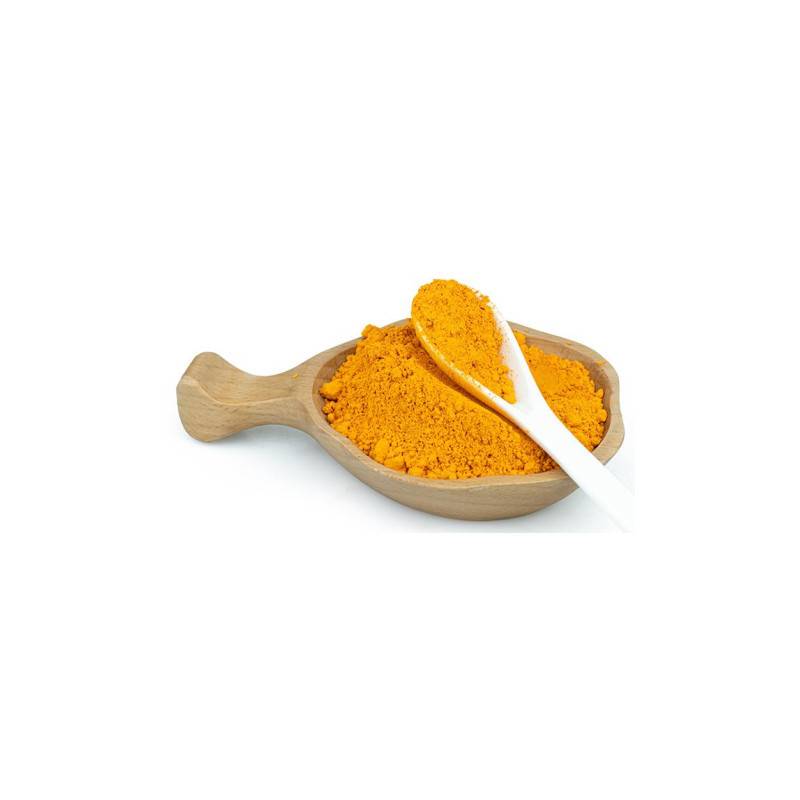
Ma Mingyan et al. [34] established a method for determining the curcumin content of Curcuma wenchowensis using ionic liquids as an extractant, combined with ultrasound-assisted extraction, and high performance liquid chromatography. Under the optimal extraction conditions, the curcumin content reached 68.53 μg·g-1. Ionic liquids, which consist of organic cations and inorganic or organic anions, are one of the emerging research fields in green chemistry. Some ionic liquids are excellent solvents for cellulose. Plant cell walls are mainly composed of cellulose and hemicellulose. Traditional solvents can only rely on concentration differences to complete the extraction. Ionic liquids can dissolve some plant cell walls by dissolving cellulose to achieve the purpose of extraction, thereby increasing the extraction rate and shortening the extraction time. Ultrasonic extraction is simple to operate, with controllable and stable conditions. It does not damage the structure and activity of the extract, which helps to speed up and improve efficiency. It can be widely used as a “green technology”.
2.3 Flash extraction
Flash extraction, also known as tissue crushing extraction, involves the use of high-speed crushing, grinding, stirring and supermolecular osmosis techniques at room temperature to dissolve the active ingredients of medicinal materials within a few minutes, achieving the effect of rapid extraction. Feng Suhuang et al. [35] compared the effects of reflux extraction and flash extraction on the extraction of curcuminoids from turmeric, and the results showed that flash extraction was more efficient. Flash extraction involves crushing and dissolving the material at the same time, which greatly reduces the time required. It avoids the decomposition and consumption of active ingredients caused by long-term extraction, and has a high extraction rate and low energy consumption. However, the amount of extract obtained by this method is limited, and it is only suitable for use in laboratories, not for large-scale production. It is also not suitable for use with herbs that are too sticky, as they may become difficult to filter after crushing [36].
2.4 Supercritical CO2 fluid extraction
Supercritical CO2 fluid extraction involves contacting a supercritical fluid with the substance to be separated in a supercritical state, so that it selectively extracts and separates components in order of polarity, boiling point and molecular weight. Since the viscosity and diffusion coefficient of supercritical fluids are close to those of gases, while their density and solubilization capacity are close to those of liquids, supercritical fluid extraction has lower viscosity, higher diffusion and stronger solubility than traditional solvent extraction, which can accelerate the extraction of effective components. Luo et al. [37] used supercritical CO2 fluid extraction to extract curcumin, an active ingredient in turmeric. The entrainment agent dosage and extraction pressure are the most important influencing factors. Under the optimal extraction conditions, the curcumin content was 14.317 mg·g-1.
Martinez-Correa et al. [38] used supercritical carbon dioxide (SCCO2) at 60 °C and 40 MPa and ethanol (or water at 60 °C) at atmospheric pressure and 25 °C as the extraction solvents to compare the yields of curcumin extracted from turmeric using a one-step and two-step method, respectively. The one-step method is to extract with a mixed solvent of SCCO2 and ethanol (or water) at the same time; the two-step method is to first extract continuously with SCCO2, and then extract with ethanol or water. The corresponding yields of the one-step method and the two-step method are 3.3% and 3.9% (curcumin content per 100g turmeric), respectively. This method is suitable for the separation of heat-sensitive and easily oxidized substances because the conditions such as pressure and temperature are easy to control. The purity of the extract obtained is relatively high, but the cost is high, so it is not suitable for industrial production.
3 Other extraction methods
In addition to the above methods, there are also the sodium salicylate method, ultra-high pressure extraction technology, subcritical extraction, ultrasonic enhanced microemulsion extraction, accelerated solvent extraction, and other extraction methods for curcumin extraction, all of which have good results.
The sodium salicylate method generally involves extracting the crude turmeric powder with a sodium salicylate solution. The extract is diluted with water to produce a precipitate, which is dried, dissolved in ethanol, filtered, and then dried again to obtain the total curcumin product. Liu Xinqiao et al. [39] compared the effects of the sodium salicylate method, the acid-base method, activated carbon and other methods on the curcumin extraction rate. The sodium salicylate method yielded the highest purity of total curcumin, up to 93.2%, but the transfer rate was lower than 10%. The sodium salicylate extraction method obtains curcumin with high product purity, is simple to operate, has low equipment requirements, and is highly reusable, and can be used for small-scale production. If natural sedimentation is used in the extraction process, a large amount of total curcumin in the extract will not precipitate, resulting in a very low transfer rate. If centrifugation is used, a large amount of impurities will precipitate with the total curcumin, resulting in a final product with low purity and therefore unsuitable for industrial production [21].
The basic principle of super-high pressure extraction technology is to first crush the medicinal herbs at room temperature, then mix them with the extraction medium (the extraction medium is selected according to the nature of the medicinal herbs) and place them in a sealed container. A hydrostatic pressure of 100–1000 MPa is applied to the raw material solution, and the pressure is quickly released after holding for a certain period of time to complete the entire extraction process. Li Xiaopeng [40] compared the total curcumin yield of four extraction methods when extracted with 70% ethanol, from high to low: supercritical extraction (2.874%) > ultrasound (2.421%) > reflux (2.039%) > cold infusion (1.585%). In terms of time efficiency, the extraction rate of 3 min of ultra-high pressure is 1.289% higher than that of 12 h of cold infusion, 0.835% higher than that of 2 h of reflux, and 0.453% higher than that of 1 h of ultrasound. Supercritical extraction reduces solvent consumption through pressure differences, and the extract is stable. It is suitable for the extraction of heat-sensitive and volatile components, but compared with ultrasound, the conditions are simpler and other conditions need to be adjusted. Bi Xiaodan et al. [41] used a domestic pressure cooker to simulate the home boiling method for the extraction of curcumin. The extraction rate of the high-pressure assisted method was as high as 0.403%, while the curcumin extraction rate of the traditional boiling method was 0.200%. It can be seen that high-pressure assisted extraction can not only be used for experimental research and factory production, but can also be extended to household extraction. However, the equipment for factory applications is expensive and has extremely high safety requirements.
Subcritical extraction is an extraction technique that uses a subcritical fluid as a solvent to extract the fat-soluble components of the material based on the principle of similar solubility of organic compounds, in a closed, oxygen-free, low-pressure pressure vessel. The extractant is then separated from the target product by vacuum distillation. Kwon et al. [42] used subcritical solvent extraction to extract three curcuminoids from turmeric, with the maximum yield of curcumin being 13.58% (4.94% curcumin, 4.73% demethoxycurcumin, 3.91% bisdemethoxycurcumin). Subcritical extraction has higher productivity than supercritical CO2 fluid extraction, is energy-saving, has low operating costs, and can be used for large-scale industrial production.
Yue Chunhua et al. [43] used a microemulsion as a bridge to couple the extraction process with the separation process. The total curcumin extraction was 20.12 mg·g-1. The microemulsion extraction solution and the oil layer separation solution in the crude product can be directly made into drugs without removing the excipients.
Accelerated solvent extraction or pressurized liquid extraction is a new extraction technology that uses organic solvents to extract active ingredients from solid or semi-solid matrices at higher temperatures (50–200 °C) and pressures (1000–3000 psi). Yadav et al. [45] extracted curcuminoids by accelerated solvent extraction and compared the performance of ethanol, ethyl acetate, acetone as extraction solvents, and the yields of curcuminoids were 3.8%, 2.8% and 2.9%, respectively. This method greatly shortens the time, automates the process, is simple to operate, and has high extraction efficiency. The advantages and disadvantages of each extraction technique are compared in Table 1.
4 Prospects
Extraction methods based on research into the characteristics of curcumin, process conditions, and the metabolic mechanisms of ingredients have led to the development of new extraction techniques such as ultrasound-assisted extraction, supercritical fluid extraction, and flash extraction. Compared with traditional extraction methods, these new techniques greatly shorten the time required for curcumin extraction, consume less consumables and energy, and significantly improve extraction efficiency. However, the following problems remain.
First, most research on curcumin extraction involves the optimization of process parameters and comparisons between different processes, while there is still relatively little innovation in the combination of different processes.
Second, as the extraction process becomes more complicated and the standards become higher, there are still difficulties in the popularization of these technologies. In addition, the capital investment in extraction equipment has increased, making it unsuitable for small companies to invest in early production.
Furthermore, the optimization of the turmeric extract technology and the corresponding extraction equipment is mainly based on experimental research, and there is a lack of industrial production technology. It is difficult to put the results of experimental research into practice, which has caused a gap between experimental technology and industrial production.
In addition, in the author's experiment to extract curcumin from turmeric, it was found that turmeric contains a large amount of curcumin oil, which is very similar in physical and chemical properties to curcumin. It is difficult to remove it from crude curcumin, which makes subsequent separation and purification more difficult.
Therefore, future research on curcumin extraction technology should first design corresponding equipment by combining multiple extraction technologies in industrial production to simplify the extraction technology. Secondly, the extraction technology should be classified according to experimental research and industrialized production applications, and experimental research should be connected with industrialized production to make experimental simulation data and processes better applied. It is recommended to try to remove curcumin oil during the extraction process to reduce the difficulty of separation and purification, improve the purity of curcumin, and even obtain curcumin crystals. Turmeric is a type of herb with medicinal and edible properties. Curcumin, its main active ingredient, is widely used in the medical and food processing industries and in demand. Therefore, efficient extraction technology will be more conducive to turmeric research and the development of the industrial chain.
References:
[1] Xia Wenjuan, Xiao Xiaohe, Liu Fengqun, Su Zhongwu, Qiao Chuanzhuo. Chemical composition analysis of domestically produced Curcuma plants [J]. Chinese Journal of Traditional Chinese Medicine, 1999(7): 40-41,51,64.
[2] Han Ting, Mi Heming. Research progress on the chemical composition and pharmacological activity of turmeric [J]. Journal of the Chinese People's Liberation Army, 2001(2): 95—97.
[3] Chen Tiehui, Yan Guohong, Chen Hua. Research progress on the chemical composition and antitumor effect of turmeric [J].
[4] Hua C Y, Kai K, Bi W L, Shi W, Liu Y S, Zhang D F. Curcumin induces oxidative stress in Botrytis cinerea, resulting in a reduction in gray mold decay in kiwifruit[J]. Journal of Agricultural and Food Chemistry, 2019,67(28): 7968—7976.
[5] Ren BQ, Tian XF, Chen Y, Xu F. Effects of curcumin and turmeric extract on coagulation function in rats with thrombosis model [J]. International Journal of Laboratory Medicine, 2019, 40(9): 1025–1027, 1031.
[6] Wosching, Cui Xiaoqiang, Tang Lihua. The effect of curcumin on the activity of enzymes related to plasma lipoprotein metabolism in rats with diet-induced hyperlipidemia [J]. Chinese Journal of Arteriosclerosis, 2003(3): 223-226.
[7] Li X X, Lin X H, Sun C W, Wu W T, Wang T, Chen J, Chen B, Du X C. Synergistic effects of liposomes encapsulating atorvastatin calcium and curcumin and targeting dysfunctional endothelial cells in reducing atherosclerosis[J]. International Journal of Nanomedicine, 2019,14: 649—665.
[8] Wu Huichun, Zhang Bin. Research progress on the mechanism of curcumin in the treatment of liver fibrosis [J]. Chinese Journal of Integrative Medicine, 2013, 33(1): 135–137.
[9] Saeede S, Behzad H, Zahra Y, Mohammad A S, Sarah E, Asieh M, Hossein P, Mehdi H, Morteza A P, Amir S, Azita H. The effects of curcumin supplementation on liver enzymes, lipid profile, glucose homeostasis, and hepatic steatosis and fibrosis inpatients with non-alcoholic fatty liver disease[J]. European Journal of Clinical Nutrition, 2019,73: 441—449.
[10] Andrii B, Helena T, Eti Z, Eti Z H, Ran W, Ofer S, Oshrat H R, Leonid P, Gary G. Synthesis and biological studies of new multifunctional curcumin platforms for anticancer drug delivery[J]. Medicinal Chemistry (shariqah (united Arab Emirates)), 2019,15(5): 537—549
[11] Chen Xiaoyu, Gao Fei, Qian Yongchang. Mechanism of curcumin in tumor therapy [J]. Journal of Clinical Reasoned Use of Drugs, 2019, 12(9): 175–176.
[12] Chen Xiangyan, Sun Yun, Chen Shu, Lin Chao, Chen Cong. Anti-tumor activity and immune function of curcumin in mice with cervical cancer [J]. Chinese Journal of Modern Applied Pharmacy, 2019, 36(15): 1861–1864.
[13] Yu Lu, Li Haiyan, Li Changchong. Research progress on the antibacterial and anti-inflammatory effects of curcumin and its derivatives [J]. Journal of Pediatric Pharmacy, 2018, 24(5): 64–66.
[14] Brandão R J, Maicon B, Thainá A, Gariel P V, Marcel H M S, Edurdo A B, Sandra E H, Mario C S B, Andre G, Leticia M C. Co-encapsulation of acyclovir and curcumin into microparticles improves the physicochemical characteristics and potentiates in Vitro antiviral action: Influence of the polymeric composition[J]. European Journal of Pharmaceutical Sciences: Official Journal of the European Federation for Pharmaceutical Sciences, 2019,131: 167—176.
[15] Xu Peiping, Fu Linchun, Zhang Fengxue, Li Jiqiang, Zhu Yutong. Study on the effect of curcumin in preventing influenza virus [J]. Tropical Diseases and Parasitology, 2009(3): 127-128.
[16] Wang Xianchun. Curcumin and its extraction method [J]. Journal of Biology, 2000(1): 37—38.
[17] Liu Li, Zhao Zhendong, Liu Zhirong, Han Gang. Comparison of the extraction rates of curcuminoids from turmeric using different solvents [J]. Journal of Hubei University of Traditional Chinese Medicine, 2016, 18(1): 33—35.
[18] Cai Jingjing, Tang Xiaozhen, Wei Siqing, Sun Caiyi, Wang Xue, Sun Jingwen, Li Ningyang. Optimization of the extraction process of curcumin from ginger by homogenization combined with organic solvent method [J]. Chinese Condiments, 2018, 43(7): 26–32.
[19] Zeng Zhiding. Extraction, purification and analysis of total curcumin from turmeric medicinal materials [D]. Xiangtan: Master's thesis, Xiangtan University, 2011.
[20] Zhang Min, Zhang Haisheng. Study on the extraction process of curcumin [J]. Processing of Agricultural Products (Journal), 2010(10): 57-59, 62.
[21] Song Changsheng, Wu Baoping, Wang Huiyan, Huang Wenjun, Li Shuan. Research on the extraction of curcumin from turmeric by alkali solution [J]. Progress in Fine Petrochemical Industry, 2006(4): 39-41.
[22] Xu Kaijia. Research on the application of eutectic solvents in the separation and analysis of biological macromolecules [D]. Changsha: Master's thesis, Hunan University, 2018.
[23] Wu Jihong, Yu Jingjing, Zhou Lin, Zhu Shuang. Extraction and separation of fusarium polysaccharides in fermentation broth by dual-water phase system [J]. Food Science and Technology, 2019, 44(3): 188-193.
[24] Jiang B, Zhang X Q, Yuan Y Q, Qu Y X, Feng Z B. Separation and enrichment of antioxidant peptides from whey protein isolate hydrolysate by aqueous two-phase extraction and aqueous two-phase flotation[J]. Foods (basel, Switzerland), 2019,8(1): 34.
[25] Su Wenbin, Lan Ruijia, Xu Yaoyao. Microwave-assisted extraction of curcumin from turmeric using ionic liquids in a two-phase system [J]. Physical and Chemical Analysis (Chemical Section), 2014, 50(5): 579–582.
[26] Wang Jiajing. Study on the ultrasonic-dual-phase extraction of curcumin and its purification process [D]. Xi'an: Master's thesis, Shaanxi Normal University, 2015.
[27] Ghasemzadeh B, Shahriari S, Pazuki G. Efficient separation of curcumin using tetra butyl phosphonium bromide/carbohydrates (sorbitol, Fructose) aqueous two-phase system[J]. Fluid Phase Equilibria, 2019(498): 51—58.
[28] Yin Lichong. Study on the purification, properties and application of curcumin [D]. Changchun: Master's thesis, Jilin University, 2014.
[29] Ning Na, Han Jianjun, Hu Yuli, Zou Zongyao, Yu Jiansheng. Study on the process of microwave-assisted enzymatic extraction of curcumin from turmeric [J]. Chinese Journal of Veterinary Medicine, 2015, 49(12): 20-26.
[30] Hadi B J, Sanagi M M, Aboul-enein H Y, Ibrahim W A W, Jamil S, Muazu M A. Microwave-assisted extraction of methyl β-cyclodextrin-complexed curcumin from turmeric rhizome oleoresin[J]. Food Analytical Methods, 2015,8(10): 2447-2456.
[31] Liu Caiqin, Zhao Dan, Zhu Min. Study on the microwave extraction process and antioxidant activity of curcumin [J]. Food Industry Science and Technology, 2012, 33(10): 302-305, 346.
[32] Guo Chenxu. A new continuous flow ultrasound-assisted extraction technology for the extraction of curcumin [D]. Dalian: Master's thesis, Dalian Medical University, 2018.
[33] Xu G K, Hao C C, Tian S Y, Gao F, Sun W Y, Sun R G. A method for the preparation of curcumin by ultrasonic-assisted ammonium sulfate/ethanol aqueous two phase extraction[J]. Journal of Chromatography B, 2017(1041-1042): 167—174.
[34] Ma Mingyan, Chen Wei. Simultaneous determination of curcumin and curcuminoids in Curcuma longa by reversed-phase high performance liquid chromatography with ultrasonic-assisted ionic liquid extraction [J]. Chinese Journal of Pharmacy, 2017, 52(7): 592-596.
[35] Feng Suxiang, Li Xiaoyu, Bai Yan, Wang Mengmeng, Wu Zhaoyu. Comparative study on the extraction of curcumin from turmeric by reflux extraction and flash extraction [J]. Traditional Chinese Medicine, 2015, 26(2): 348-350.
[36] Zhao Lei, Tang Hui, Dong Qiong, Yuan Tianrong, Zhao Xuemei. Research progress and application of tissue crushing extraction method and flash extractor [J]. Modern Research and Practice of Traditional Chinese Medicine, 2014, 28(3): 74-76.
[37] Luo H, Li YF, Liu Y. Extraction of curcumin by supercritical CO_2 fluid extraction [J]. Modern Food Science and Technology, 2010, 26(4): 400–401, 405.
[38] Martinez-correa H A, Paula J T, Kayano A C A, Queiroga C L, Magahaes P M, Costa F T M, Cabral F A. Composition and antimalarial activity of extracts of Curcuma longa L. obtained by a combination of extraction processes using supercritical CO2 , ethanol and water as solvents[J]. The Journal of Supercritical Fluids, 2017,119: 122-129.
[39] Liu Xinqiao. Study on the extraction process of total curcumin from turmeric [D]. Wuhan: Master's thesis, Hubei College of Traditional Chinese Medicine, 2004.
[40] Li Xiaopeng. Study on the extraction, separation, antibacterial and antitumor activities of curcumin [D]. Jinan: Master's thesis, Shandong Normal University, 2010.
[41] Bi Xiaodan, Sa Rula, Gao Yu, Zhao Xuemei. Study on the extraction of curcumin from turmeric by high pressure assisted method [J]. Journal of Chifeng College (Natural Science Edition), 2018, 34(1): 8-10.
[42] Kwon H L, Chung M S. Pilot-scale subcritical solvent extraction of curcuminoids from Curcuma long L.[J]. Food Chemistry, 2015,185: 58—64.
[43] Yue Chunhua, Zheng Litao, Guo Qiming, Li Kunping. Study on the extraction and separation of total curcuminoids in turmeric by ultrasonic enhanced microemulsion [J]. Chinese Materia Medica, 2014, 37(5): 880-883.
[44] Yang Liu. Research progress on the extraction process of curcumin from turmeric [J]. Agricultural Science and Technology and Equipment, 2017(5): 89—90.
[45] Yadav D K, Sharma K, Dutta A, Kundu A, Awasthi A, Goon A, Banerjee K, Saha S. Purity Evaluation of Curcuminoids in the Turmeric Extract Obtained By Accelerated Solvent Extraction[J]. Journal of Aoac International, 2017,100(3): 586—591.


 English
English French
French Spanish
Spanish Russian
Russian Korean
Korean Japanese
Japanese